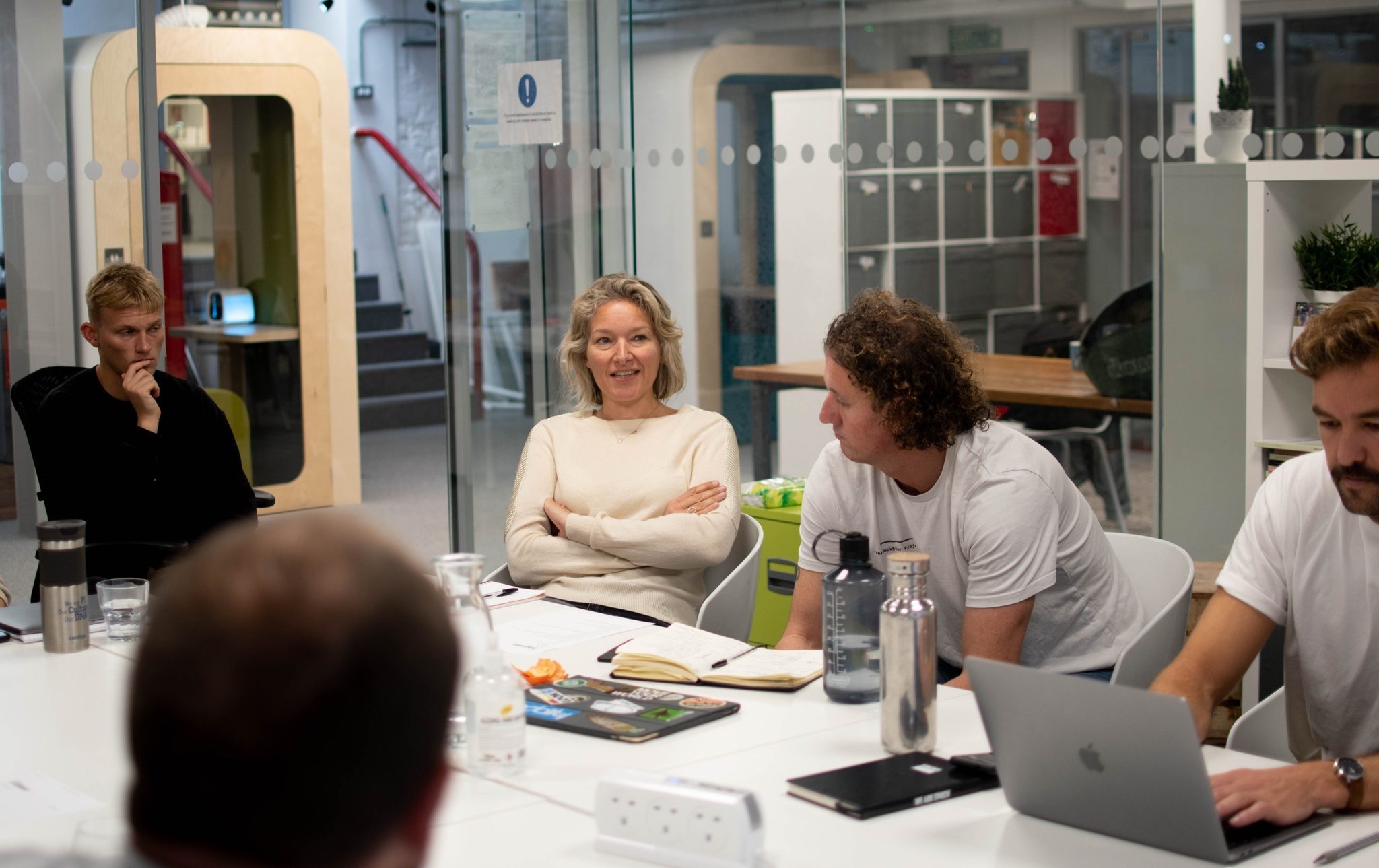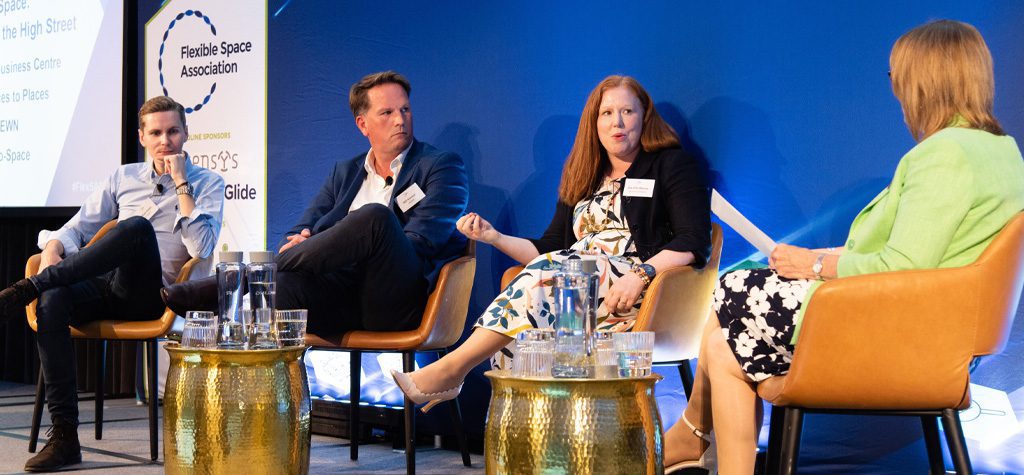The flexspace market is still growing, with the total number of serviced offices in the UK rising by 3% in 2021 and 5% in 2022. And the general consensus is that growth isn’t about to slow down, with industry figures predicting that flexspace will take up 20-30% of the total office market by 2030.
That means there’s still time to grow with the market, capturing a bigger slice of a constantly growing pie. But there’s no point growing your business if it doesn’t result in increased profits, which is where the concept of scaling comes in.
In this article, we’ll talk through the differences between scaling and growth, what challenges you’ll face scaling a flexspace brand, and how you can overcome them to grow your business’s value. By the end, you’ll be ready to go away and put plans into action to take your business to new levels.
Scaling vs growth
First off, it’s important to understand what we actually mean by ‘scaling’ a business, as opposed to ‘growing’ it. The simple version is that growth is measured through increased turnover, while scaling refers to widening profit margins.
If your costs increase at the same rate as your revenue, you’ll only ever make the same amount of profit. In other words, you can grow a business, driving more revenue, without really being rewarded for it.
Scaling a business means increasing revenue at a higher rate than costs. This is what brings you more profits. And the bigger the difference between the rate of growth in your revenue versus your costs, the more profitable your business becomes.
For example, if you open a new location and the costs it incurs match the revenue you generate, you’ve grown, not scaled. You could transform that growth into genuine scaling by making decisions that mean your revenue growth outruns the cost growth. This could involve taking on a larger space which offers greater value per sqft, or adding new revenue streams like events hire, catering, or a virtual office service.
The challenges of scaling a flexspace brand
Scaling is the best way to grow the value of your flexspace business, but it’s not without its challenges. On the path to increased scale, you’re likely to come up against challenges including:
-
- Finding investment/raising funds: In most cases, you need to open more locations to grow. Management agreements are a perfect route if you don’t have funds immediately available but do have a track record of success. If you want to do it the traditional way, you’ll need funding. There are lots of options to consider here, including partnering like Plus X Innovation did with Ashby Capital, running funding rounds like Talent Garden, using business loans, or setting up a crowdfunding drive. Which is best for you depends on how much you need to raise and how quickly.
-
- Maintaining your core vision: When small with a core team communication and alignment strong. As you scale your flexspace business, you’ll naturally struggle to stay true to your original vision. It gets more difficult to uphold high levels of customer service, adhere to your ESG goals, and brand consistency when your team and portfolio grows. But these are all essential to your value proposition, and letting them drop can affect your chance of scaling effectively.
-
- Growing at the right speed: It can be tempting to try to scale your business as quickly as possible, especially when demand is growing in the market. But rushing into it can cause you to lose focus, and leave you spinning more plates than you can handle. This is most often the result of trying to expand into more than one new location at a time.
-
- Getting location strategy right: In the flexspace sector, location really is key. Choosing the right locations significantly increases the chances of success through expansion. But choosing the wrong ones, whether by overestimating demand or getting the cost/benefit analysis wrong, presents significant risk that can derail your entire business plan.
-
- Marketing effectively and efficiently: Many flexspace businesses run perfectly well, up until the point they open new locations in areas where they have no local brand awareness. In this situation, they have to establish a marketing drive to grow their reputation, but they often make the mistake of thinking that more marketing equals better marketing. In reality, this idea often only means spending more money on campaigns that don’t really deliver results.
-
- Anticipating future demand: The flexspace market moves quickly, and the details of customer demand are constantly changing. One of the biggest threats to your business’s success is not keeping up with these changes and designing a workplace that can adapt to them, meaning you’re constantly one step behind what customers actually want from their workspace.
This list isn’t exhaustive, but it covers some of the most common challenges encountered by flexspace operators looking to scale. Knowing about these challenges is the first step to overcoming them, but you can be proactive in how you approach portfolio growth to really improve your chances of success.
What you can do to overcome flexspace growing pains
The good news is that these challenges aren’t insurmountable. There are plenty of ways you can pre-empt, prepare for, and proactively address obstacles between you and a successfully scaled flexspace business. They include the following methods:
Plan methodically
What this means in practice is to build a robust and detailed long-term business plan, covering your main business objectives and how you aim to achieve them. This will act as a ballast as you move forward with your scaling operation – serving as a constant reminder of what you’re actually trying to accomplish.
A brand playbook, outlining your brand mission, USPs, tone of voice and visual design guidelines, target audience personas, and more, is another great way to plan ahead. You can refer back to your playbook as you create marketing assets or brand materials, ensuring consistency in how your business is presented to your audience.
Methodical planning can also involve creating strong standard operating procedures (SOPs) to regulate some of the processes you’ll repeat over and over again while scaling your business. An SOP covering the onboarding of a new occupier, for example, is easy to create but will save you countless headaches by giving you a simple checklist to refer to whenever you need it.
Choose the right funding method
Scaling a flexspace business, especially on a short or medium time horizon typically requires some form of external investment. There are different approaches to raising capital, and each one has its own unique pros and cons. If you’re undecided on which is right for you, look at examples of successful examples of flexspace business scaling for inspiration.
Oru Space, for example, raised funds for their next location on Sutton High Street using a crowdfunding scheme. They offered equity in the workspace to individual investors in exchange for capital injections, an approach that’s helped them reach their £450,000 target.
This is a good fit for their specific model because it means they can maintain their brand values in a pure form, without making compromises to appease institutional investors. But it’s not always a successful approach.
Traditional methods of funding like direct investment or acquisitions are still more common in the market. Techspace, for instance, raised €5.8 million in 2019 through an investment from the Noé Group to fuel their expansion into Europe. This is a much greater sum of money than they could have conceivably raised through crowdfunding, matching their ambitious plans.
Follow the data
Good, relevant data is an incomparably useful asset when you’re trying to scale a flexspace business. It can make every step of the process easier, and also give you the best chance of expanding your business in the most efficient way. But to get your hands on useful data, you need to carry out incisive research.
The two key areas to focus on if you want to maximise your scaling success are customer demand and location strategy. The former will help you to understand what your target market actually wants from their workspace, meaning you can adapt to changes in demand and attract more occupiers consistently over the long-term.
The latter will help you to ensure every new location you launch is perfectly positioned to capture existing demand. This is particularly important because expanding into an unsuitable location where there’s not enough demand means you’re fighting an uphill battle to reach your occupancy targets.
Focus on your values
While it can be tempting to chase new trends and constantly overhaul your offering, you’ll generally get the best results from your scaling operation by remaining consistent with your original brand values. This is especially the case if you’ve found early success on the back of those values.
Remember, the flexspace sector is closest in its nature to hospitality, and just like in that sector, the customer comes first. Avoid getting distracted by new technology, initiatives, or branding ideas if they don’t immediately serve your customers’ needs.
Embrace expert help
Finally, but maybe most importantly, don’t forget that it’s perfectly fine to call in support if you need it. Scaling a flexspace business is fundamentally challenging, and it can involve spinning lots of plates without letting any of them drop. Doing that without adequate resources or expertise can be practically impossible.
But growing your team by hiring full-time employees is expensive, and it’s not always the best choice. Instead, try fractional resourcing, getting flexible support to help you through periods of growth or expansion.
If you need support scaling your flexspace business, Spaces to Places can help. We offer a range of cost-effective solutions, using our proven system to help make the process of scaling quickly and effectively significantly easier.



